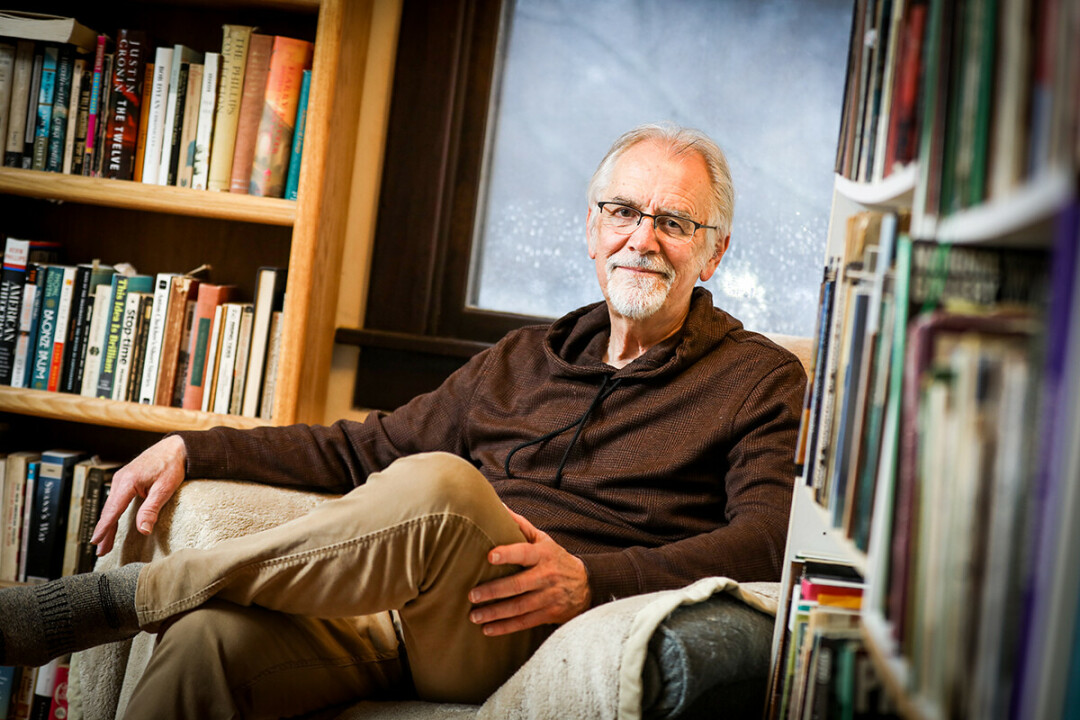WORLDS APART: Garland’s New Volume of Poetry Explores Territory Near and Far
‘Into the Good World Again’ touches on natural world, pandemic, political divide
BJ Hollars, photos by Andrea Paulseth |

In May 2021, poet and pal Max Garland and I struck out in search of lady’s-slippers – a rare orchid recently spotted in western Wisconsin.
“I’ll take you there,” Garland said, “but you can’t tell anyone where we go.” If word got out, he explained, we humans would inevitably act upon our baser instincts – plucking and preserving rather than letting them be.
Later that day, Max and I knelt in the forest in an undisclosed location. We were unmasked and together – a rarity in itself in the era of social distancing. The orchids were more beautiful than I imagined, and more wondrous, too, given the secretive circumstances that led me to them.
In his newly released fifth poetry collection, Into the Good World Again, Garland invites readers on a similarly intimate journey into the natural world: One in which flowers and rivers and rocks get their due, though often amid the backdrop of the pandemic. Throughout the collection, COVID-19 is simultaneously there and not there, loitering on the periphery. “I wanted the book to have relevancy beyond COVID,” Garland said in a recent interview. “(The book) has to do with mortality and how we keep in touch across distances.”
Throughout the collection, COVID-19 is simultaneously there and not there, loitering on the periphery.
Physical distances, to be sure, though the collection also obliquely explores the growing distance between our country’s divided political camps. Since 2020, we’ve been plagued by more than a plague, namely, people who struggle to agree even on the scientific facts upon which our lives depend.
“We had a common enemy (in COVID),” Garland said, “yet at times, we still turned against one another about school closings, masks, and vaccines. That was incredibly depressing.”
While confronting the devastation of the COVID years, Max also highlights hope in the humblest of places: a neighbor’s dog walk, a cat’s forepaw, the “flotillas of cottonwood fluff” floating down the river.

In these poems, fans of Garland – a professor emeritus at UW-Eau Claire and former Wisconsin poet laureate – will recognize the grace and humanity that have become hallmarks of his work. Yet what makes this collection unique is the vastness of his vantage points. Garland writes poems with both microscope and telescope close at hand. One moment he’ll riff on the element carbon, and the next, he’ll point readers toward the stars.
Though he covers much ground (and sky and water, too), these poems remain anchored in resilience. It is the nature of nature to persist, survive, and adapt amid the ever-changing world.
In “Bedrock,” Garland writes, “The main lesson life by water teaches is that coming / and going are the constant. No hope of one without / the other, which the heart already knows, of course.”
Pick your disaster – pandemic, poverty, the climate crisis – human existence endures, much as it does in the natural world. Though, indeed, there is frailty in both.
When I asked Garland what we might’ve learned from our long-ago journey to see the lady’s-slippers, he paused to consider it. “Well,” he said at last, “maybe that things of beauty, or rarity, can lead to their annihilation.”
Garland’s poems remind us that there is no scarcity of beauty in the world. That variations of lady’s-slippers are everywhere if you know where (and how) to look. For those like me, the pandemic provided the opportunity to slow down, look closer, and kneel in the forest alongside a friend. Juxtaposed alongside our human horrors, the world’s natural beauty appeared in sharp relief.
“Maybe there was some solace in seeing something beyond our human dilemma,” Garland said, reflecting on those lady’s-slippers. “It let us see that the natural world was still going.”
We take comfort in the continuity of nature. Of knowing that each plant can be counted on to fulfill its annual cycle of germination, pollination, and fertilization before dispersing back into the world.
Whether it is a “good” world or not is up to us. Though with Garland as guide, perhaps our “fledgling human light” might help us stave off the dark.
Max Garland’s latest poetry collection, Into the Good World Again, will be published March 14 by Holy Cow Press. Learn more at holycowpress.com. You can also find some of Garland’s poetry here on Volume One’s own website.






















